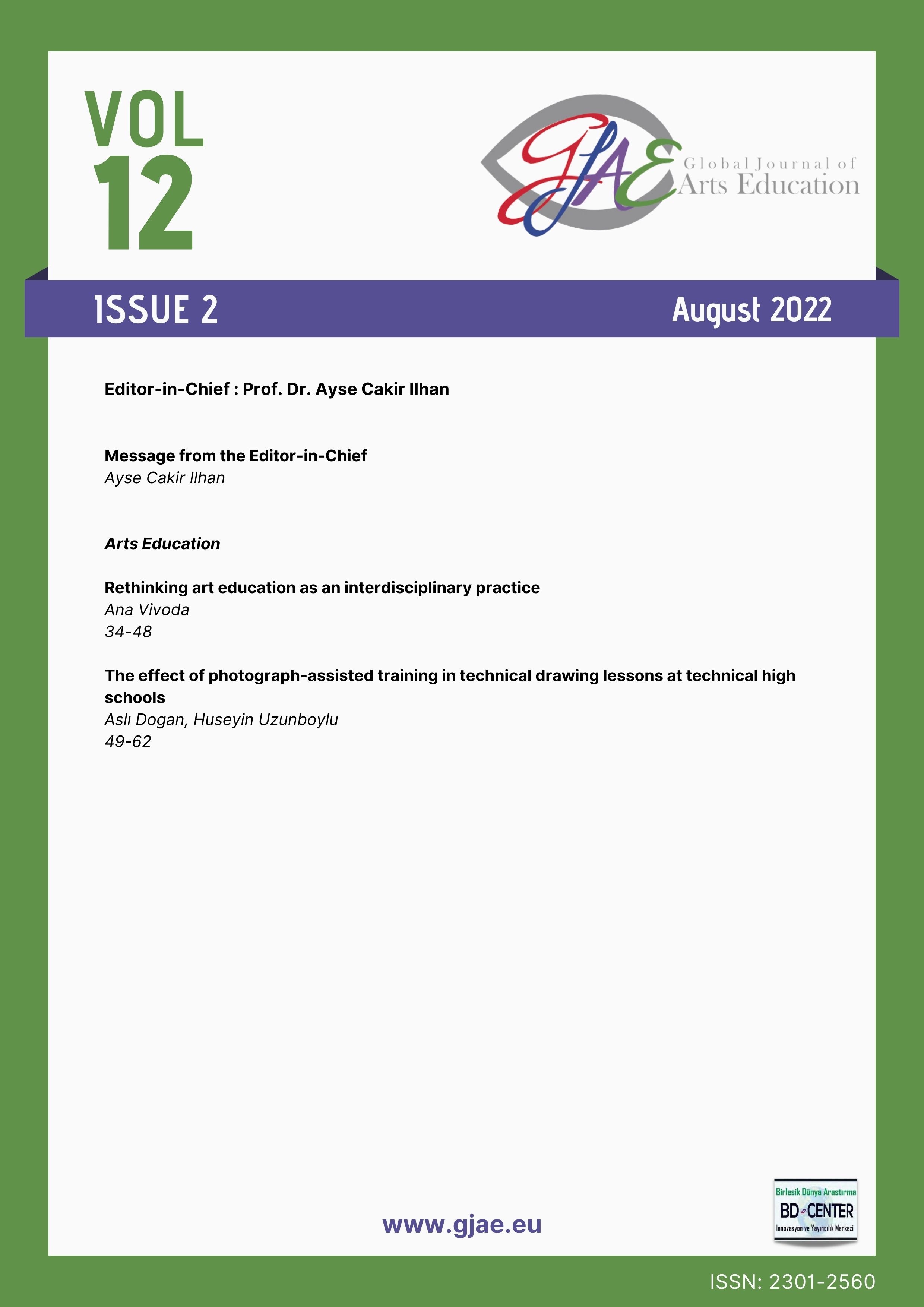The effect of photograph-assisted training in technical drawing lessons at technical high schools
Main Article Content
Abstract
There are flawless designs to produce materials used in rapidly developing technology continuously. The drawings of designs are made on paper down to the latest detail and are mostly taught to students at schools. These lessons aim to improve students' three-dimensional thinking abilities. In this study, the topic of perspective and projection in technical drawing lessons that students struggled with is handled. The study aims to show the difference in final achievement between the usage of photograph-assisted training and direct instruction technique in teaching the topic of perspective and projection. The technique of direct instruction is applied to some students at industrial technical school, while photography-assisted training is applied to other students at Anatolian technical high school. According to the exam results at the end of 7 weeks, it is found that the technique of photography-assisted training is very effective in improving perspective and projection technical drawing ability. The usage of this technique by teachers will bring success to technical high school students.
Keywords:High schools; photograph-assisted training; technical drawing.
Downloads
Article Details
Authors who publish with this journal agree to the following terms:
- Authors retain copyright and grant the journal right of first publication with the work simultaneously licensed under a Creative Commons Attribution License that allows others to share the work with an acknowledgement of the work's authorship and initial publication in this journal.
- Authors are able to enter into separate, additional contractual arrangements for the non-exclusive distribution of the journal's published version of the work (e.g., post it to an institutional repository or publish it in a book), with an acknowledgement of its initial publication in this journal.
- Authors are permitted and encouraged to post their work online (e.g., in institutional repositories or on their website) prior to and during the submission process, as it can lead to productive exchanges, as well as earlier and greater citation of published work (See The Effect of Open Access).

